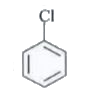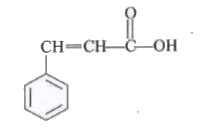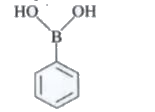Identify the substitute group, that acts as ortho-para director, during electrophilic substitution in aromatic compounds.
−NH2
NO2
−SO3H
−COOH
To solve the question of identifying the substituent group that acts as an ortho-para director during electrophilic substitution in aromatic compounds, we can follow these steps:
Step 1: Understand the Concept of Electrophilic Substitution
In aromatic compounds, electrophilic substitution reactions can occur at different positions on the benzene ring. The substituent groups attached to the ring can influence where the electrophile will attack. These groups can be classified as ortho-para directors or meta directors.
Step 2: Identify Ortho-Para Directors
Ortho-para directors are typically electron-donating groups that can stabilize the positive charge that develops during the reaction. These groups usually have a +R (resonance) effect, which increases electron density at the ortho and para positions of the aromatic ring.
Step 3: Analyze the Given Options
We will analyze the substituent groups provided in the options to determine which one is an ortho-para director.
1. Option 1: NH2 (Amino Group)
- The amino group has a lone pair of electrons on nitrogen, which can be donated to the aromatic ring. This increases electron density at the ortho and para positions, making it an ortho-para director.
2. Option 2: NO2 (Nitro Group)
- The nitro group is an electron-withdrawing group due to the electronegativity of nitrogen. It pulls electron density away from the ring, making it a meta director, as it decreases electron density at the ortho and para positions.
3. Option 3: SO3H (Sulfonic Acid Group)
- Similar to the nitro group, the sulfonic acid group is also an electron-withdrawing group. It also acts as a meta director for the same reasons as the nitro group.
4. Option 4: C=O (Carbonyl Group)
- The carbonyl group is another electron-withdrawing group. It also acts as a meta director due to its ability to pull electron density away from the aromatic ring.
Step 4: Conclusion
From the analysis, only the amino group (NH2) is an ortho-para director. The other groups (NO2, SO3H, and C=O) are meta directors.
Final Answer
The substituent group that acts as an ortho-para director during electrophilic substitution in aromatic compounds is NH2 (Amino Group).
---
In aromatic compounds, electrophilic substitution reactions can occur at different positions on the benzene ring. The substituent groups attached to the ring can influence where the electrophile will attack. These groups can be classified as ortho-para directors or meta directors.
Ortho-para directors are typically electron-donating groups that can stabilize the positive charge that develops during the reaction. These groups usually have a +R (resonance) effect, which increases electron density at the ortho and para positions of the aromatic ring.
We will analyze the substituent groups provided in the options to determine which one is an ortho-para director.
- The amino group has a lone pair of electrons on nitrogen, which can be donated to the aromatic ring. This increases electron density at the ortho and para positions, making it an ortho-para director.
- The nitro group is an electron-withdrawing group due to the electronegativity of nitrogen. It pulls electron density away from the ring, making it a meta director, as it decreases electron density at the ortho and para positions.
- Similar to the nitro group, the sulfonic acid group is also an electron-withdrawing group. It also acts as a meta director for the same reasons as the nitro group.
- The carbonyl group is another electron-withdrawing group. It also acts as a meta director due to its ability to pull electron density away from the aromatic ring.
From the analysis, only the amino group (NH2) is an ortho-para director. The other groups (NO2, SO3H, and C=O) are meta directors.
The substituent group that acts as an ortho-para director during electrophilic substitution in aromatic compounds is NH2 (Amino Group).
Topper's Solved these Questions
- HYDROCARBONSBOOK - VMC MODULES ENGLISHCHAPTER - HYDROCARBONSEXERCISE - Level-2
50 Videos
- HYDROCARBONSBOOK - VMC MODULES ENGLISHCHAPTER - HYDROCARBONSEXERCISE - Level-2 (Numerical Value Type)
15 Videos
- HYDROCARBONSBOOK - VMC MODULES ENGLISHCHAPTER - HYDROCARBONSEXERCISE - Level-0 Long Answer Type (5 Marks)
1 Videos
- HALOALKANES AND HALOARENESBOOK - VMC MODULES ENGLISHCHAPTER - HALOALKANES AND HALOARENESEXERCISE - IN-CHAPTER EXERCISE - F
6 Videos
- ICONIC EQUILIBRIUMBOOK - VMC MODULES ENGLISHCHAPTER - ICONIC EQUILIBRIUMEXERCISE - IMPECCABLE
50 Videos
Similar Questions
Knowledge Check
The ether that undergoes electrophilic substitution reactions is
ACH3OC2H5BC6H5OCH3CCHOCH3DC2HOC2H3The correct order of reactivity towards electrophilic substitution is
Abenzene > phenol > benzoic acid > chlorobenzeneBphenol > benzene > chlorobenzene > benzoic acidCchlorobenzene > benzoic acid > phenol > benzeneDbenzoic acid > chlorobenzene > benzenegtphenol.Which of the following are deactivating but ortho, para directing during electrophilic aromatic substitution reaction ?
A B
B C
C D
D
Althrough chlorine is an electron withdrawing group, yet it is ortho-para-directing in electrophilic aromatic substitution reactions. Explain why it is so ?
View SolutionElectrophilic aromatic substitution is difficult in
View SolutionGive three examples of electrophilic substitution reactions.
View SolutionIdentify the correct order of reactivity in electrophilic substitution reactions of the following compounds :

View SolutionWhich of the following substitution of benzene is ortho-para in electrophilic substitution and ortho-para in nucleophilic substitution ?
View Solution
